#Empress Isabella of Portugal
Explore tagged Tumblr posts
Text

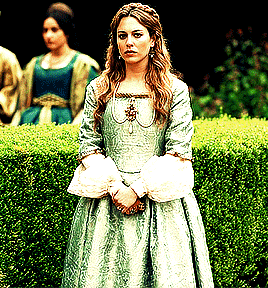
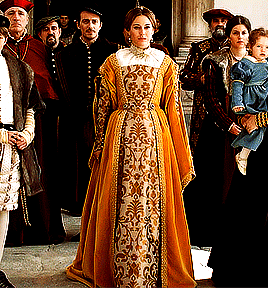

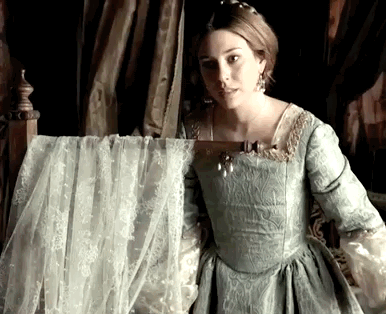
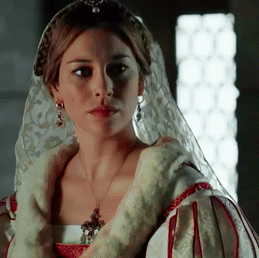
𝑰𝒏𝒕𝒆𝒓𝒏𝒂𝒕𝒊𝒐𝒏 𝑹𝒐𝒚𝒂𝒍/𝑰𝒎𝒑𝒆𝒓𝒊𝒂𝒍 𝑯𝒊𝒔𝒕𝒐𝒓𝒚 𝑨𝒑𝒑𝒓𝒆𝒄𝒊𝒂𝒕𝒊𝒐𝒏 𝑴𝒐𝒏𝒕𝒉:
𝑾𝒆𝒆𝒌 2: 𝑸𝒖𝒆𝒆𝒏𝒔/𝑬𝒎𝒑𝒓𝒆𝒔𝒔𝒆𝒔
𝑫𝒂𝒚 13: 𝑰𝒔𝒂𝒃𝒆𝒍𝒍𝒂 𝒐𝒇 𝑷𝒐𝒓𝒕𝒖𝒈𝒂𝒍, 𝑯𝒐𝒍𝒚 𝑹𝒐𝒎𝒂𝒏 𝑬𝒎𝒑𝒓𝒆𝒔𝒔 𝒂𝒏𝒅 𝑸𝒖𝒆𝒆𝒏 𝒐𝒇 𝑺𝒑𝒂𝒊𝒏, 𝑮𝒆𝒓𝒎𝒂𝒏𝒚, 𝒂𝒏𝒅 𝑰𝒕𝒂𝒍𝒚
*𝑨𝑳𝑳 𝒈𝒊𝒇 𝒄𝒓𝒆𝒅𝒊𝒕𝒔 𝒈𝒐 𝒕𝒐 𝒕𝒉𝒆 𝒐𝒓𝒊𝒈𝒊𝒏𝒂𝒍 𝒐𝒘𝒏𝒆𝒓𝒔*
#isabella of portugal#holy roman empress#queen of spain#queen of germany#queen of italy#carlos rey emperador#international royal/imperial history appreciation month:week 2
33 notes
·
View notes
Text
The pipeline of Charles “they had to deceive and drag me to my wedding” ofthe Bold, to his son in law Maximilian “hey… This Burgundian lady is pretty. I think I’m going to like her :)”, Holy Roman Emperor to Maximilian’s son Philip “marry me to this girl right now, idc if we need more pomp, I need to consummate” the Handsome is real, and it can happen to you too.
#Charles the Bold#Maximilian I#Philip the Handsome#House of Valois#house of habsburg#And then we have Charle’s namesake and great grandson (Charles V) who was so love struck he was faithful to his wife and never got over her#Also the way the consorts got sassier… From Isabelle of Bourbon being merely described pliant and faithful#To Mary of Burgundy being (ahem) THE DUCHESS OF BURGUNDY#To Joanna of Castile refusing to put up with her husband and her father’s bullshit#(And to Isabella of Portugal being a good empress and regent as Charles was away)
3 notes
·
View notes
Text
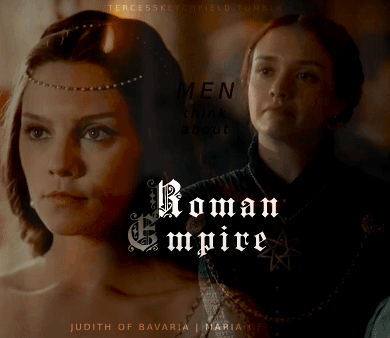
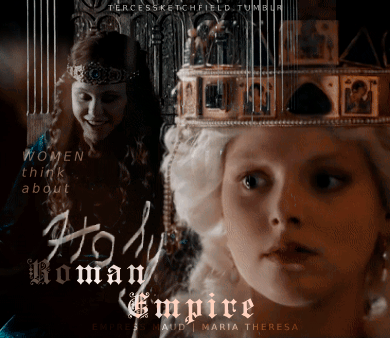
MEN THINK ABOUT ROMAN EMPIRE. WOMEN THINK ABOUT HOLY ROMAN EMPIRE
JUDITH OF BAVARIA (797-843) — Daughter of Count Welf I of Bavaria, Judith was a Carolingian Empress as the second wife of Louis I the Pious. Mother of Gisela and Charles the Bald, she foght for both her own influence at court and for the succession of her son over the claims of his elder half-brothers, the sons of Louis I from his first marriage. Charles became the Emperor in 875, after the death of Louis II, his nephew and a son of his half-brother Lothair / fancast: Annabel Scholey
MARIA OF AUSTRIA (1528-1603) — Daughter of Charles V, Holy Roman Emperor, and Isabella of Portugal. She served as Regent of Spain both jointly with her husband, Maximilian (before their accession to the imperial throne), and in person, for her father, and brother, Philip II. Her children include two Holy Roman Emperors, Rudolf II and Matthias, over whom she held great influence, and queens consorts of Spain, and France / fancast: Olivia Cooke
EMPRESS MAUD (1102-1167) — Daughter of Henry I of England and Matilda of Scotland. Her first marriage to the Holy Roman Emperor, Henry V, gave her the title under which she came down into history, and was a source of great pride to Maud. Rightful heiress of Henry I, she confronted her cousin, King Stephen, in the civil war, known as the Anarchy, fighting ferociously for her rights. She failed in this for herself but won for her son Henry, who became king and established the Plantagenet dynasty in England / cast: Alison Pill in The Pillars of the Earth (2010)
MARIA THERESA (1717-1780) — She succeded her father Charles VI as the ruler of Habsburg monarchy in 1740, and devoutedly defended it against its enemies in the War of Austrian Succession and the Seven Year's War. Wife of the Holy Roman Emperor, Francis I, she was a forceful personality and a competent ruler herself, reigning first in her own right, and later, jointly with her son Empreror Joseph II. Her children include two Holy Romam Emperors (Joseph II and Leopold II), queens consorts of Naples ans Sicily, and France / cast: Marie-Luise Stockinger in Maria Theresia (2017)
#historyedit#judith of bavaria#maria of austria#empress maud#empress matilda#maria theresa#maria theresia#perioddramaedit#history#women in history#perioddramasource#onlyperioddramas#tusereliza#userbennet#usermina#weloveperioddrama#cortegiania#perioddramagif#gifshistorical#my edit#*i have literally zero idea what is this lmao* but i really like it idk
141 notes
·
View notes
Text








AU: Valois House. Children Francis I and Claude Valois.
Luisa(1515 - 1576). Queen of Spain and Empress of the Holy Roman Empire. Wife of Charles V. Despite the fact that the age difference between the spouses was 16 years, they loved each other. Charles treated his young wife with tenderness. She was interested in music, dancing and writing. Luisa and Charles had 7 children: John III, Claude, Philip, Ramiro, Ferdinand, Joana, Charles.
Charlotte(1516 - 1570). Queen of Portugal. Wife of Juan III and mother of 6 children: José I, Manuel, Isabella, Sancho, Aldegunda, Mary. Charlotte devoted much time to the education of her children and the enlightenment of the Portuguese court. She was the favorite sister of Francis II and maintained a close relationship with his wife.
Francis II(1518 - 1590). King of France. Husband of Mary Tudor. Francis loved his wife. Unlike his father and brothers, he never had mistresses or children out of wedlock. The reign of Francis II was an era of prosperity and rise. Father of 8 children: Claude, Francis III, Catherine, Charlotte, Tristan, Raoul, Adele, Henry.
Henry(1519 - 1587). Duke of Orleans. Husband of Catherine de Medici and father of 10 children: Francis, Elizabeth, Claude, Louis, Charles, Henry, Margaret, Hercule, Victoria and Jeanne. All his life loved only his mistress Diana de Poitiers, even wanted to marry her, but because of pressure from his father did not do it.
AU: дом Валуа. Дети Франциска I и Клод Валуа.
Луиза(1515 - 1576). Королева Испании и императрица Священной римской империи. Жена Карла V. Несмотря на то, что разница в возрасте между супругами была 16 лет, они любили друг друга. Карл с нежностью относился к молодой жене. Интересовалась музыкой, танцами и писательством. У Луизы и Карла родилось 7 детей: Хуан III, Клод, Филипп, Рамиро, Фердинанд, Хуана, Карл.
Шарлотта(1516 - 1570). Королева Португалии. Жена Жуана III и мать 6 детей: Жозе I, Мануэль, Изабелла, Саншу, Альдегунда, Мария. Шарлотта уделяла много времени образованию своих детей и просвящению Португальского двора. Была любимой сестрой Франциска II и поддерживала близкие отношения с его женой.
Франциск II(1518 - 1590). Король Франции. Муж Марии Тюдор. Франциск любил свою жену. В отличие от отца и братьев у него никогда не было любовниц и внебрачных детей. Правление Франциска II было эпохой процветания и подъёма. Отец 8 детей: Клод, Франциск III, Екатерина, Шарлотта, Тристан, Рауль, Адель, Генрих.
Генрих(1519 - 1587). Герцог Орлеанский. Муж Екатерины Медичи и отец 10 детей: Франциск, Елизавета, Клод, Людовик, Карл, Генрих, Маргарита, Эркюль, Виктория и Жанна. Всю жизнь любил только свою любовницу Диану де Пуатье, даже хотел на ней жениться, но из-за давления отца не стал этого делать.
Part 1.
#history#history au#royal family#royalty#au#france#france history#History of France#French royal family#french#french royalty#french royal family#French royal#Royal#Royals#the tudors#henryviii#mary tudor#the serpent queen#catherine de medici#mary stuart#Henryii#francis valois#The reign#elizabeth i#15th century#16th century#Francis i#Francisii#French kings
29 notes
·
View notes
Text

Isabella of Portugal, Queen of Spain, Holy Roman Empress (1503-1539)
#16th century#early 16th century#mdp16th c.#holy roman empress#queen of spain#16th c. holy roman empire#holy roman empire
78 notes
·
View notes
Text
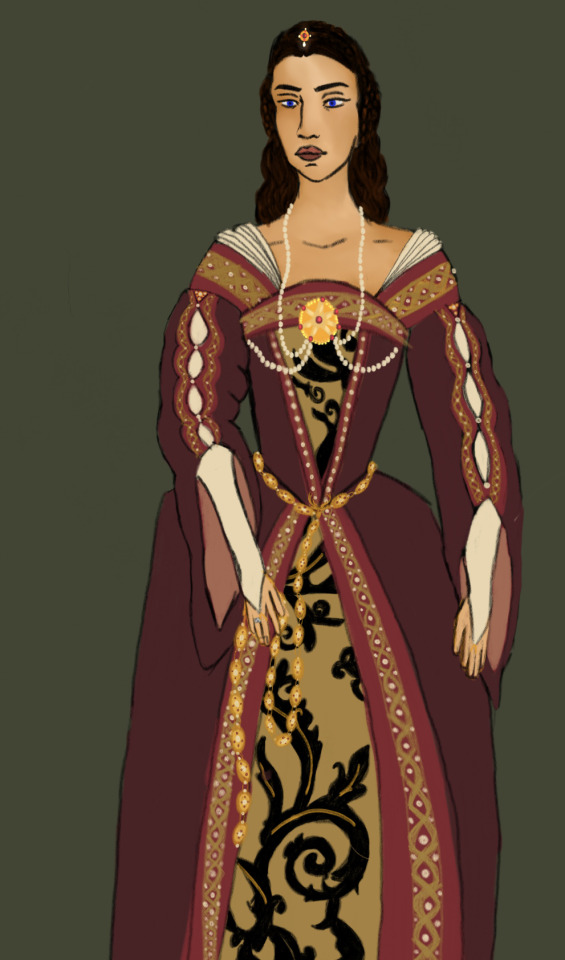
The dress is inspired by the portrait of Isabella of Portugal, empress consort of Charles V

(With the background)
#digital drawing#got#a song of ice and fire#asoiaf#my ocs#house baratheon#robert baratheon#house lannister#cercei lannister#myrcella baratheon#shireen baratheon#princessbaratheon#fanfic#my art#-
10 notes
·
View notes
Text
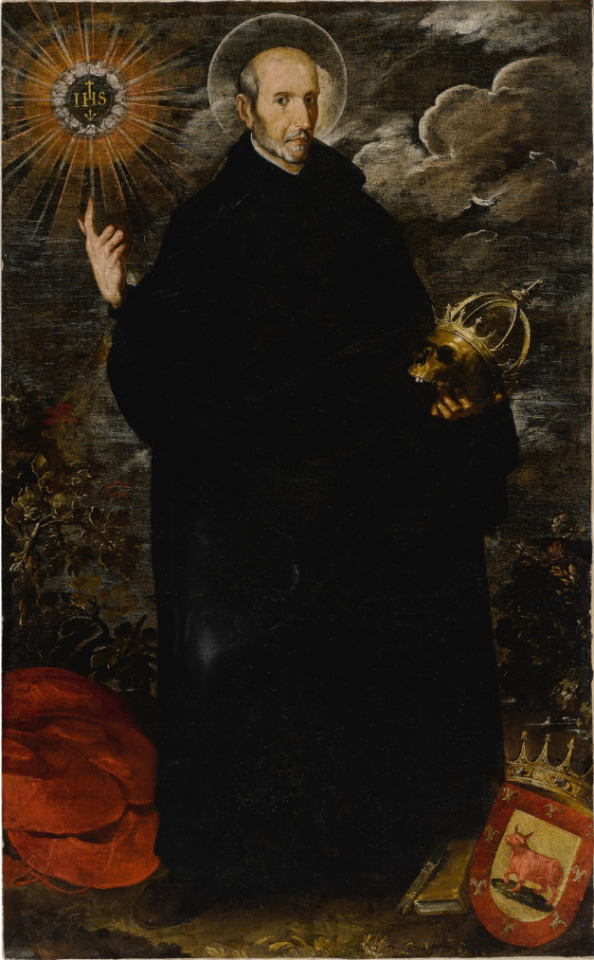
THE DESCRIPTION OF SAINT FRANCIS BORGIA The Patron Against Earthquakes Feast Day: September 30, October 3 (Jesuit calendar)
Francis Borgia (Francisco de Borja y Aragón) gave up incredible wealth, power and privilege as a Spanish nobleman to enter the Society of Jesus where his experience brought him to leadership as the third superior general of the young Society of Jesus. The oldest son of the third duke of Gandía, Borgia was born in the family palace in Valencia. His great grandfather on his father's side was Pope Alexander VI, and his mother's grandfather was King Ferdinand the Catholic.
Like other young nobles he was trained for life at court, and in 1522 was appointed page to his cousin Catherine, the sister of Emperor Charles V who invited him back to court after he studied philosophy for three years. In 1529, he married Leonor de Castro of Portugal, Empress Isabella's first lady-in-waiting. The 20 year-old Borgia was honored by the Emperor who named him Marquis of Llombai, and placed him in charge of the imperial household. During the next 10 years, Francis and Eleanor had eight children and lived in great familiarity with Charles and Isabella, until the Empress unexpectedly died on May 1, 1539.
Her death led directly to Borgia's conversion when Francis accompanied the funeral cortege to the burial place in the royal chapel in Granada. When the coffin was opened, he saw not the beautiful face of the 36-year-old queen, but a face beyond recognition. Not wanting to serve another master who would die, he began to devote himself to prayer and penance.
After he returned from Granada, he was appointed Viceroy of Catalonia in June 1539, and then became the fourth duke of Gandía after his father died four years later. He returned to the family palace to manage his estates, but when his wife Leonor died March 27, 1546, he resolved to dedicate the rest of his life to God's service. He was familiar with the Jesuits, having founded a Jesuit college in Gandía and being a personal friend of Father Peter Favre whom he asked to inform Ignatius of his decision. Ignatius welcomed him into the Society but recommended that he tell no one until he arranged affairs for his children and finished studying theology. Meanwhile, the founder of the Jesuits encouraged the duke to continue living as a nobleman. Francis pronounced his vows as a Jesuit on Feb. 1, 1548 and on Aug. 20, 1550 earned a doctorate in theology from the university which he himself had founded.
Since 1550 was a Holy Year, Francis took the opportunity to make a pilgrimage to Rome so he could visit Ignatius and arrange his public entrance into the Society of Jesus. He left his home in Gandía, never to see it again, and lodged in the Jesuit residence in Rome with Ignatius rather than taking Pope Julius III's offer to stay in the Borgia apartments in the Vatican. After living as a Jesuit from the end of October until early February 1551, he returned to Spain where he resigned his title in favor of his son, Carlos. As soon as he received the Emperor's letter accepting his resignation, Francis donned the Jesuit cassock. He was ordained a priest on May 23 and celebrated his first Mass in the chapel in the Loyola family home.
For a few years Borgia worked as an ordinary parish priest. In 1554 he was named Commissary General in Spain, with power over provincials in Spain and Portugal. He founded Spain's first novitiate, at Simancas, and set up over 20 schools. He did not attend the first general congregation, convened almost two years after Ignatius died, but did return to Rome in 1561 at Pope Pius IV's request. He was chosen to be vicar general when Father James Laínez, who succeeded Ignatius as superior general, attended the last session of the Council of Trent. Upon Laínez's return, Borgia became assistant for Spain and Portugal, and then was elected to succeed Laínez after his death in 1565.
Borgia served as the third superior general of the Jesuits for seven years and devoted himself to revising the Society's rules, expanding its missions in India and the Americas, and shepherding the growth of the young Society.
His final project was a mission to Spain accompanying Cardinal Michele Bonelli in an effort to secure Spain's help against the Turks. The two churchmen left Rome in June 1571, and arrived in Barcelona by the end of August. Borgia was overwhelmed by the reception he received from people who had known him as a nobleman and honored his choice of religious life. In December, Borgia left Spain for France to continue the diplomatic mission, but he fell ill from fever and pleurisy because of the unusually cold. He had to spend weeks resting in Turin on the return trip to Rome and then stayed with relatives in Ferrara during the summer.
Finally, he set out for Rome on Sept. 3, 1572, going to bed immediately upon his arrival. His final illness lasted three days before the 61-year-old general died during the night of September 30.
Source: jesuits.global
#random stuff#catholic#catholic saints#francis borgia#francisco de borja y aragó#francisco borja#jesuits#society of jesus
4 notes
·
View notes
Text
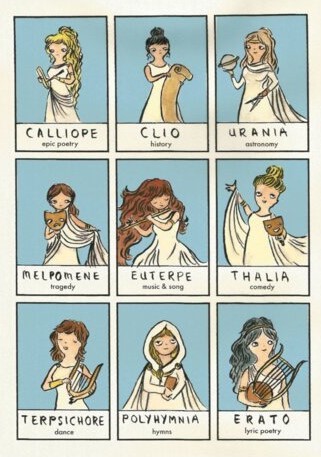
As I'm currently indexing this blog or, rather, meta-tagging posts in my new version of it on the Blogger website (I will post proper link as soon as it's finished), I decided to compile a list of all the women who feature (or receive a mention however fleetingly) within it. I have tried to trawl the blog ''with a fine toothcomb'', but I'm bound to have missed a few names - oh well! Here is the list as complete as I can muster. The women appear in (broadly) alphabetical order by first name. *** NB it is still a work in progress ***
VOCALISTS & MUSICIANS
Alice Waterhouse (flute) * Amy Winehouse * Angel Olsen * Annie June Callaghan * Ari Up & The Slits * Be Good Tanyas, The * Billie Holiday * Bjork * Black Belles, The * Cait O’ Riordan (Pogues) * Calista Williams (Bluebird) * Cindy Wilson & Kate Pierson (The B52s) * Cistem Failure * Clementine Douglas * Cosey Fanni Tutti * DakhaBrakha (well, 3/4 of them!) * Debbie Harry * Edith Piaf * Elizabeth Morris (Allo Darlin') * Holly Golightly * HoneyLuv * Katy-Jane Garside * Kelis * Kim Deal (Pixies & Breeders) * Maxine Peake * Maxine Venton & Mimi O'Malley (Captain Hotknives) * Meg White * Melanie Safka * Nico * Nina Simone * Patti Rothberg * Penny Ford (Snap!) * PJ Harvey * Rhoda Dakar (Special AKA) * Seamonsters, The * Siouxsie Sioux * Suzanne Vega * Tray Tronic * Trish Keenan (Broadcast)
VISUAL ARTS
Annegret Soltau * Anne Ophelia Dowden * Artemisia Gentileschi * Barbara Regina Dietzsch * Beverly Joubert * Camille Claudel * Clara Peeters * Dale DeArmond * Doreen Fletcher * Eleanor Fortescue-Brickdale * Élisabeth Sonrel * Elisabetta Siriani * Elizabeth Mary Watt * Ella Hawkins * Evelyn De Morgan * Frida Kahlo * Gertrude Abercrombie * Helen Martins * Kate Gough * Laura Knight (Dame) * Leonora Carrington * Lily Delissa Joseph * Liza Ferneyhough * Magdolna Ban * Mandy Payne* Mary Delany * Miina Akkijrkka * Ndidi Ekubia * Pamela Colman-Smith * Paula Rego * Rachel Gale * 'Romany Soup' * Sarah Vivien * Shirley Baker * Siirkka-Liisa Konttinen * Sofonisba Anguissola * Sonia Delaunay * Tish Murtha * Vali Myers * Vanessa Bell
COMEDY, DANCE & DRAMA
Alicia Eyo & Carol Morley ('Stalin My Neighbour') * Claire Foy * Daisy May Cooper * Gabrielle Creevy & Jo Hartley ('In My Skin') * Isadora Duncan * Jessica Williams ('Love Life') * Lesley Sharp, Michelle Holmes & Siobhan Finneran ('Rita, Sue & Bob Too') * Michaela Coel ('I May Destroy You') * Morgana Robinson * Samantha Morton * Yasmin Paige (Jordana Bevan in ‘Submarine)
WRITERS, JOURNALISTS, SCHOLARS & POETS
Agatha Christie (MBE) * Andrea Dunbar * Anaïs Nin * Angela Thirkell * Anna Funder * Anna Wickham * Edith Holden * Elizabeth O'Neill * Enid Blyton * Harriet Beecher Stowe * Helen Castor (Dr.) * Hilary Mantel * Janina Ramirez (Dr.) * Jeannette Kupfermann * Jenny March (Dr.) * Jenny Wormald (Dr.) * Lia Leendertz * Mary Oliver * Orna Guralnik (Dr.) * Rachel Beer * Susie Boniface * Virginia Woolf
HISTORICAL FIGURES
Anne, Queen of Great Britain * Anne Boleyn, Queen of England * Anne of Cleves, Queen of England * Boudicca, Queen of the Iceni * Cartimandua, Queen of the Brigantes * Catherine de’ Medici, Queen Consort/Regent of France * Catherine Parr, Queen of England * Catherine of Aragon, Queen of England * Catherine of Valois, Queen of England * Christine de Pizan * Cixi, Empress of China (aka Empress Tz'u-hsi ) * Eleanora of Austria, Queen of France * Eleanor of Aquitaine, Queen of France; Queen of England; Duchess of Aquitaine * Eleanor of Castile * Eleanor Talbot ("The Secret Queen") * Elizabeth I Queen of England * Elizabeth Woodville, Queen Consort of England * Elizabeth of York, Queen Consort of England * Elizabeth Stuart, Queen of Bohemia * Hatshepsut, Pharaoh of Egypt *Hildegard of Bingen * Isabeau of Bavaria, Queen of France * Isabella I, Queen of Castile * Isabella of Aragon, Princess of Asturias * Isabella of Portugal, Empress Consort of Holy Roman Empire and Queen Consort of Spain, Germany & Italy * Isabella of France, Queen of England * Jacquetta of Luxemburg * Jane Grey (Lady), Queen of England for Nine Days * Jane Seymour, Queen of England * Juana (aka Joanna), Queen of Castile * Katherine Howard, Queen of England * Louise of Savoy, Regent of France * Margaret of Anjou, Queen Consort of England * Margaret of Austria [check which one] * Margaret Beaufort, Lady * Marie Antoinette, Queen of France * Mary I, Queen of England * Mary II, Queen of England, Scotland & Ireland * Mary, Queen of Scots * Mary of Austria [check which one] * Mary of Burgundy, Duchess * Matilda, Holy Roman Empress * Melisende, Queen of Jerusalem * Sophia of Hanover, Electress * Tatya Betul, Empress of Ethiopia * Theodora, Empress of Byzantium * Victoria, Queen of England & Empress of India
SAINTS & BIBLICAL/CHRISTIAN REFERENCES
Anna (wife of Tobit) * Apollonia (Saint) * Barbara (Saint) * Catherine of Alexandria (Saint) * Ecclesia * Eve (the first woman) * Felicitas of Rome (Saint) * Genevieve (Saint) * Godeberta * Jael * Jezebel * Judith * Lucy (Saint) * Margaret of Scotland (Saint) * Mary Magdalene * Rahab * Rose of Lima (Saint) * Synagoga * The Queen of Sheba * Thérèse of Lisieux (Saint) * Virgin Mary, The* "Whore of Babylon", The * Ursula (Saint)
MYTHOLOGICAL
Anat * Asherah * Astarte * Atalanta * Aurora * Baba Yaga * Circe * Chhinnamasta * Clio/Kleio * Demeter (Rmn: Ceres) * Dido, Queen of Carthage * Durga * Elaine of Astolat * Europa * Eurydice * Hathor * Hesperides * Io * Isolde/Iseult * Isis * Juno (Gk: Hera) * Kali * Kriemhild/Gudrun * Kudshu * Lakshmi * Persephone (Rmn: Proserpine) * Radha * Sabine Women, The * Sati * Sedna * Sirens, The (half-female, half-bird) * Three Graces, The * Valkyries, The * Venus (Aphrodite)
WIVES, MUSES, CONSORTS & SIGNIFICANT OTHERS
Anastasia Romanovna (wife of Ivan the Terrible) * Anne Hyde (1st wife of James, Duke of York; she did not live long enough to see him become James II) * Anne Lovell (wife of Sir Francis Lovell) * Anne of Denmark (wife of James VI of Scotland/James I of England & Ireland) * Bella Chagall (wife of Marc Chagall) * Catherine of Braganza (wife of Charles II) * Charlotte of Mecklenburg-Strelitz (Queen of England as wife of George III) * Clementine Churchill (wife of Winston Churchill) * Diane de Poitiers (royal mistress to the French king, Henry II) * Emma Hamilton, Lady (mistress of Lord Horatio Nelson) * Evelyn Pyke-Nott (wife of John Byam Shaw) * Françoise Gilot (partner of Pablo Picasso) * Frances Grey, Duchess of Suffolk (mother of Lady Jane Grey) * Henrietta-Maria (wife of Charles I) * Lady Martha Temple (wife of Sir William Temple) * MacDonald sisters, The (Alice, Georgiana, Agnes and Louisa) * Marguerite of Navarre/Angoulême (sister of French king, Francis I) * Mary of Modena (2nd wife of James VI and I, King of Scotland, England, and Ireland) * Mary Shelley (mentioned as wife of Percy Bysshe Shelley, though a renowned author in her own right) * Mary Soames (daughter of Winston Churchill & wife of Christopher Soames) * Mary Stuart (daughter of Charles I and mother of the future William III) * Mary Watts (wife of George Frederic Watts, and designer and artist in her own right) * Olga Khokhlova (1st wife of Pablo Picasso) * Portia (wife of Brutus) *
2OTH CENTURY & MODERN DAY
Christabel Pankhurst * Emily Wilding Davison * Emmeline Pankhurst * 'Gulabi Gang' * Hannah Hauxwell * Helen Keller * Hilary Clinton * Liz Truss * Margaret Campbell, Duchess of Argyll * Mata Hari * Melina Mercouri * Nazanin Zaghari-Ratcliffe * Rahima Mahmut * Sylvia Pankhurst *
8 notes
·
View notes
Text
the praise was conditional but the comparisons were always there, too, whether implicit or explicit:
I hope the English will not do much against us now, as we are free from his lady, who was a good Frenchwoman. [...] Hears he has already espoused another lady, who is a good Imperialist (I know not if she will continue), and to whom he paid great attention before the death of the other.
but again, toothless... if she was a ‘good imperialist’, she wasn’t an effectual one; there was no anglo-imperial rapprochement during this period, and not much approaching anything near one (she had gained imperial recognition of her marriage and queenship in the form of chapuys’ reverence, but so too, had her predecessor), considering the timeline:
june 1536: chapuys instructed to secure english support in the franco-imperial conflict, or at least, a promise that henry viii would not interfere, chapuys fails to gain even a promise of neutrality
june 1536-march 1537: despite the symbolic recognition in england via his envoy, charles v continues to refer to jane in his own dispatches as henry’s ‘mistress’ (‘the mistress and her adherents’ in regards to the potential match between mary and dom luiz of portugal)
july-december 1536: princess mary renounces all rights to the throne, affirms the legitimacy of the anglican schism and her own illegitimacy, writes letters to charles v and other imperial relatives affirming this again, and even requests that charles no longer meddles with her father’s temporal and religious authority
october 1536- january 1537: chapuys issues a call to arms and request for ammunition to the rebels of the pilgrimage of grace via familial intermediaries on the continent. directly, he requests that empress isabella solicits reginald pole’s return to england so that he will overthrow henry viii.
january-june 1537: marriage negotiations begin for a potential match between mary and dom luiz of portugal. the imperial envoy, don diego de hurtado mendoza, was instructed to have an audience with jane in regards to this marriage, but dispatches suggest he only had audiences with the king, cromwell, and the privy council. the proposed alliance comes to nothing. the possibility is briefly renewed in 1538/39, when henry viii badgers charles v for the dual alliance of his own marriage to christina of milan alongside this earlier proposed match.
4 notes
·
View notes
Text
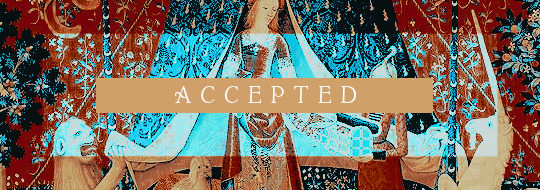
‘ 𝚃𝙷𝙰𝚃 𝙵𝙰𝙲𝙴 𝙾𝙵 𝚈𝙾𝚄𝚁𝚂 𝙸 𝙳𝙾 𝚁𝙴𝙼𝙴𝙼𝙱𝙴𝚁 𝚆𝙴𝙻𝙻 … ’ WELCOME TO FORTUNE'S WHEEL! the following roles and faceclaims have been accepted. please send in your account within forty-eight (48) hours to avoid your role being re-opened.
aaron cobham as felipe of spain. alessandra mastronardi as marie de guise. alessandro fella as henry of england. alperen duymaz as iskender sultan. aure atika as isabella of anjou. berk cankat as dragut. burak özçivit as sultan selim. fahriye evcen as gülsah sultan. gong jun as hans of denmark. gong li as empress xiaojing. john boyega as philip of austria. john david washington as emperor maximilian. lashana lynch as eleanor of portugal. leyla feray as gevherhan sultan. marina moschen as sophia of byzantium. mark rowley as edward of york. marlon teixeira as emperor theodore. matilda de angelis as katherine plantagenet. max irons as prince louis, duke of normandy. medalion rahimi as anna of france. merve boluğur as hurrem hatun. paul mescal as george of york. rebecca ferguson as alienor of aquitaine. rose williams as margaret plantagenet. sai bennett as anne of york. shannyn sossamon as matilda of flanders. trisha krishnan as damiata.
3 notes
·
View notes
Text
#the tudors#the spanish princess#carlos rey emperador#reign cw#padmavaat#jodhaa akbar#vikings: valhalla
1 note
·
View note
Text

I would have brought thousands of carnations from Persia to the other side of the world for her too.
#Isabella of Portugal#holy roman empress#queen of Spain#charles V I feel you#House of Avis#House of Habsburg#House of Trastámara
2 notes
·
View notes
Text

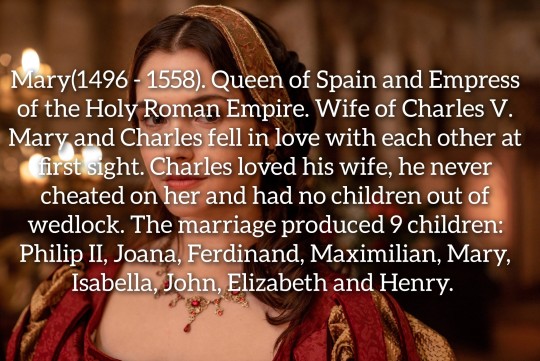
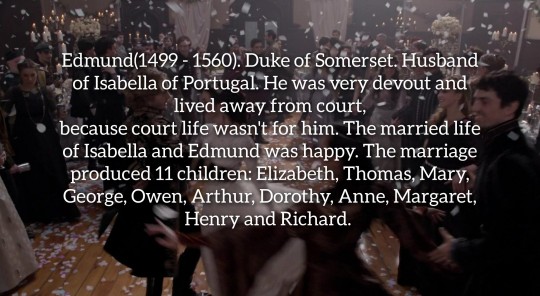


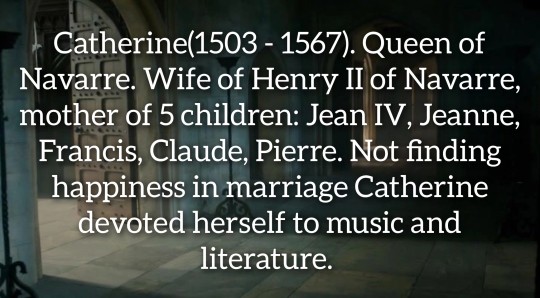
AU House of Tudors: Children Henry VII and Elizabeth of York.
Mary(1496 - 1558). Queen of Spain and Empress of the Holy Roman Empire. Wife of Charles V. Mary and Charles fell in love with each other at first sight. Charles loved his wife, he never cheated on her and had no children out of wedlock. The marriage produced 9 children: Philip II, Juana, Ferdinand, Maximilian, Mary, Isabella, Juan, Elizabeth and Henry. She was beloved by her subjects.
Edmund (1499 - 1560). Duke of Somerset. Husband of Isabella of Portugal. He was very pious and lived away from court, because court life wasn't for him. The married life of Isabella and Edmund was happy. The marriage produced 11 children: Elizabeth, Thomas, Mary, George, Owen, Arthur, Dorothy, Anne, Margaret, Henry and Richard.
Catherine(1503 - 1567). Queen of Navarre. Wife of Henry II of Navarre, mother of 5 children: Jean IV, Jeanne, Francis, Claude, Pierre. Not finding happiness in marriage Catherine devoted herself to music and literature.
AU: Дети Генриха VII и Елизаветы Йоркской.
Мария(1496 - 1558). Королева Испании и императрица Священной римской империи. Жена Карла V. Мария и Карл влюбились в друг друга с первого взгляда. Карл любил свою жену, он ей никогда не изменял и не имел внебрачных детей. В браке родилось 9 детей: Филипп II, Хуана, Фердинанд, Максимилиан, Мария, Изабелла, Хуан, Елизавета и Энрике. Такжа она была любима своими подданными.
Эдмунд(1499 - 1560). Герцог Сомерсет. Муж Изабеллы Португальской. Был о��ень набожным и жил в дали от двора, так как придворная жизнь была не для него. Супружеская жизнь Изабеллы и Эдмунда была счастливой. В браке родилось 11 детей: Елизавета, Томас, Мария, Джордж, Оуэн, Артур, Дороти, Анна, Маргарита, Генрих и Ричард.
Екатерина(1503 - 1567). Королева Наварры. Жена Генриха II Наваррского, мать 5 детей: Жан IV, Жанна, Франсуаза, Клод, Пьер. Не найдя счастья в браке Екатерина посвятила всю себя музыке и литературе.
Part 2.
#history#history au#royal family#royalty#isabella#english#english history#british royalty#british royal family#british history#British#au#the spanish princess#the white queen#the white princess#the tudors#mary tudor#henryviii#henry vii of england#elizabeth of york#catherine of aragon#house of york#house of tudor#Royal#Royals
14 notes
·
View notes
Photo








“When I look at her I don't see the empress, nor the queen, nor who can give me children, I see the one without whom my life would be less life.”
Requested by knapp-shappey
#Carlos Rey Emperador#charles v#carlos v#carlos i#isabella of portugal#Empress Isabella of Portugal#álvaro cervantes#blanca suárez#history#spanish history#european history#holy roman empire#period drama#perioddramaedit
325 notes
·
View notes
Photo










Royal women: Princesses or Infantas that became Queens or Empresses
Matilda of England, Queen of England*, Empress of the Holy Roman Empire
Catherine of Aragon, Infanta of Castile and Aragon, Queen of England
Mary Stuart, Queen of Scotland, Queen of France
Margaret Tudor, Princess of England, Queen of Scotland
Isabel I of Castile, Queen of Castile, Queen of Aragon
Isabel of Portugal, Infanta of Portugal, Empress of the Holy Roman Empire
Catherine of Valois, Princess of France, Queen of England
Joan of Portugal, Infanta of Portugal, Queen of Castile
Mary I of England, Queen of England, Queen of Spain
Mary Tudor, Princess of England, Queen of France
#Empress Matilda#Empress Maud#catherine of aragon#Mary Queen Of Scots#margaret tudor#Mary I Of England#mary stuart#mary i#mary tudor#Catherine of Valois#Isabella I of Castile#Isabel of Portugal#Isabella of Portugal#Isabel I of Castile#joan of portugal#joan of avis#queen#empress#princess#infanta#Blanca Suárez#sarah bolger#sai bennett#michelle jenner#Adelaide Kane#Lily Rose Depp#charlotte hope#georgie henley#bárbara lennie#alison pill
119 notes
·
View notes
Text
Isabella of Portugal; October 24
Isabella of Portugal; October 24
On October 24th 1503, Isabella, consort of Charles V was born in Portugal to King Manuel, and Queen Maria of Aragon (pictured below) From an early age Isabella displayed the piety and goodness of character which was the hallmark of her life. Though brought up in an atmosphere of regality, she and her siblings were kept firmly in check by a strict religious mother(very much a child of Isabella of…

View On WordPress
7 notes
·
View notes